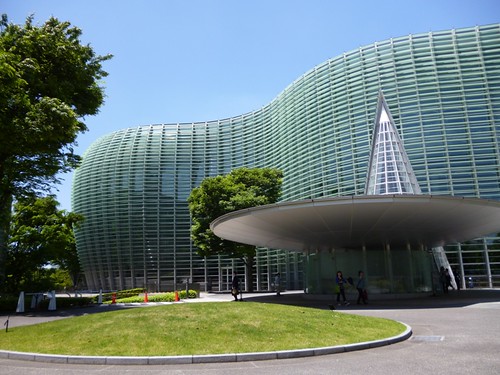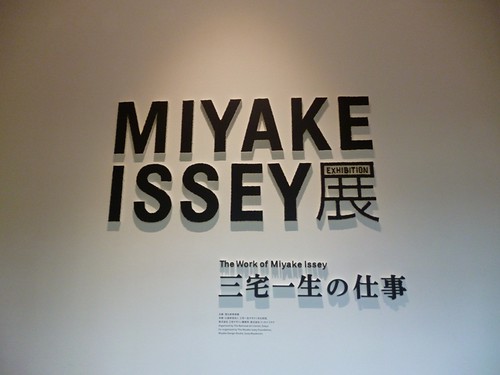The
Work of Miyake Issey exhibition showcases the great designer's work
from the 1970s to the present. Miyake Issey is a Japanese fashion
designer who is well-known for his technology-driven clothes designs. It
was a great opportunity to get to know more of his work. I must admit,
when I was studying fashion, I was more into European designers. After
visiting the exhibition, I was really impressed with the technology
incorporated into fashion.
The exhibition is divided into three main sections;
Section A
This section showcases Miyake Issey's early design solutions; drawing, visually, a long introductory line to themes. These will resurface, differently yet regularly in his work. Miyake Design Studio was founded in 1970 focusing on ideas of freedom - of thought and body. For example, he created and designed a jumpsuit with a tattoo motif which looked like a wearable second skin. Such a cool piece of work.
Section B
In the 1980s, the human body, how to enhance, streamline and redesign, was the central work of Miyake Issey. Different materials were used such as metal, rattan, bamboo in his work to explore the human body.
Section C
In this section, several themes are exhibited - pleats, A-POC, Material and Ikko Tanaka - Issey Miyake. Pleats, in my opinion, is one of the signatures of his work. Here, there are many pleats pieces showcased including a pleating machine. Too bad, during my visit, it was not the demonstration slot. It would be interesting to see how the machine works. He developed a special process of 'garment pleating". This means that a piece of clothing is pleated after it is sewn. This produces very sharp and defined lines.
In 1998, Miyake Issey and Dai Fujiwara developed A-POC. It is a revolutionary process that allows to shape clothes integrally through the production of a tubular piece of knit fabric. It virtually erasing all waste while doing away cutting and sewing.
In Material section, the designer believes any material can be turned into clothing. Here he explored different materials such as Japanese washi paper, horsehair and raffia, in his work. Furthermore, he also experimented special treatments giving surfaces an alive, animal look and also exploring futuristic fabric; polyester which is heat-cut and molded into shape with the aid of snap buttons and the needlepunching treatment which produces unique textures by layering layers of different materials. To me, this is the most interesting section of all.
The exhibition will end on 13th June 2016. If you are in Tokyo, do check it out at The National Art Center, Tokyo.
Till my next post, stay chic and have a wonderful weekend!













No comments:
Post a Comment